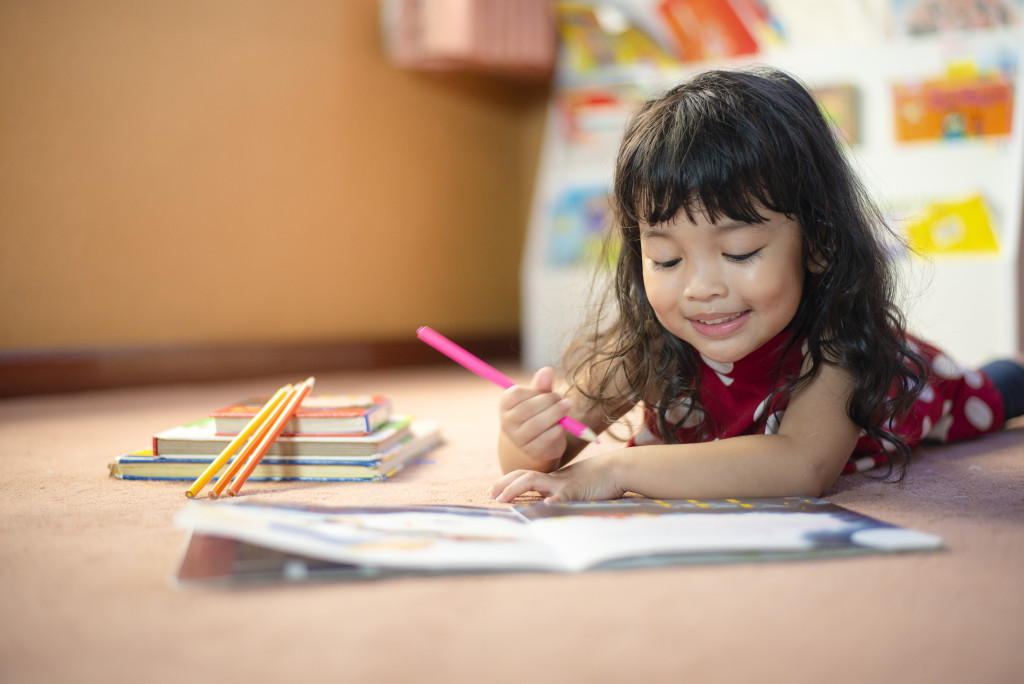For today’s parents and their children, the issue of college education can be top of mind. School location and quality of instruction are both intimately linked to job-related outcomes as well as overall costs.
However, early childhood learning also deserves the same level of attention. When a child graduates from elementary school, application and acceptance to the right high school sets them on track for success.
Effective learning in young children is vital for scientific reasons as well. During this period, their brains have the highest level of neuroplasticity compared to any subsequent stage of their lives.
Young kids are primed for learning all the time. And their surroundings play a major role in this process. To set your child up for future success and develop a healthy sense of self-esteem, you can start by making improvements to the home environment.
Know the relevant principles
The child’s environment isn’t just the various rooms of the house in which they live. It also includes the objects and people within. Kids will always test the world around them and interact with things. Those interactions are happening around the clock and comprise a huge chunk of their early learning experiences.
It’s this aspect that you can really maximize by working to improve the home environment. Parents are a child’s first teachers, and bear significant responsibility for their early learning, but they can’t possibly be hands-on all the time. Crafting an enriched home learning environment helps to lighten the burden.
Decluttering
The life-changing magic of tidying up isn’t just for adults to enjoy. Enrichment doesn’t equate to messy. You want to engage a child’s senses in the right way, not overstimulate them.
Go through the house one room at a time, but prioritize those areas where the child will spend the most time. As you clear out the clutter, think about what you’re doing as an act of curation.
What items might make the room a bit more fun or interactive for your child? Do those paintings and art objects seem interesting from their perspective, or are they only engaging to adults?
Improving accessibility
A common problem for many children is that they grow up in homes that were designed for adult living. Furniture is adult-sized. Windows and door handles are out of reach. Conversely, potentially unsafe objects like electrical outlets are easily accessible.
That last example is one reason why many parents feel the need to child-proof their homes. Yet we tend to neglect the accessibility issue on the whole.
Sure, it’s a good idea to have cabinets high up where you can store fragile or hazardous items. But what about the bathroom sink, where kids are supposed to practice good oral hygiene? Having it around the height of an adult’s waist makes it less accessible. A slip-resistant stool or platform can make a world of difference to the child.

Opportunities to observe
A critical element in improving a child’s educational outcomes is knowing how they approach the learning process itself. And parents are in the best position to make extensive observations about that during the early childhood stage.
Allowing young kids to spend too much time in their own rooms is a challenge to this goal of observation. Increasingly, you leave the process up to chance. You can regain a measure of control by altering the environment to increase the amount of time they spend in shared areas.
A multi-functional area allows you to combine rooms, such as the kitchen and living room. Or a child’s playroom with your home office. You can prepare meals, or go about your work routine while keeping an eye on what they’re doing.
Involve them
As you go about making these changes to your home, you can do your child (and yourself) one more favor. Get them involved.
The sense of agency is a powerful determinant of one’s future success. And it begins to develop in early childhood. Kids are quick to understand when their actions or decisions can make a difference, even in a small way.
Ask your child about the best way to organize things, and get them to help out as you tidy up your home. Get their opinion on what added features might make a room more child-friendly or interesting. Of course, it’s a good idea to limit their choices to a range of options that are within your budget.
With a child’s involvement in the process, you can not only create a better learning environment at home but develop their confidence as agents and difference-makers in their lives.







